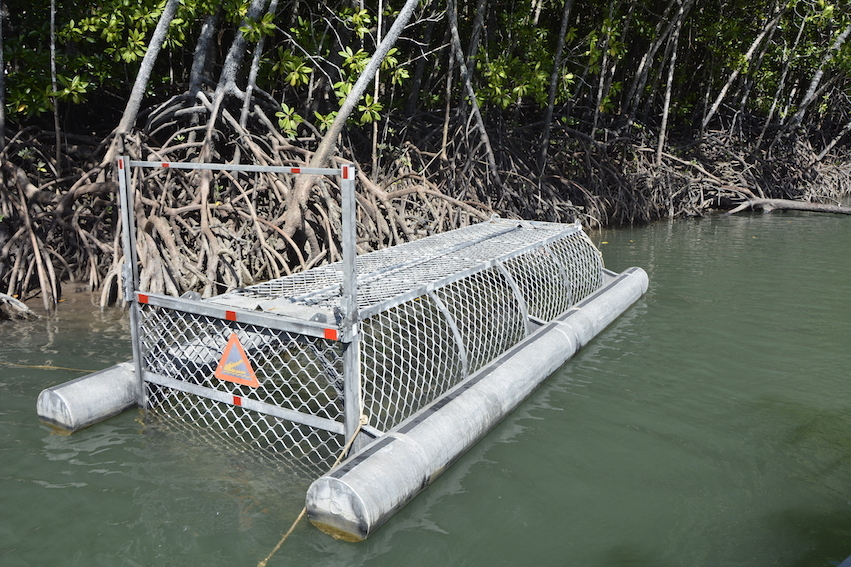Crackdown on croc trap tampering
CROCODILE MANAGEMENT

TOUGH new penalties will be introduced for people who interfere with crocodile traps.
A number of floating devices have been tampered with recently in Far North Queensland prompting the Department of Environment and Heritage Protection to act.
A trap near the Ross and Locke Reserve on the Mulgrave River south of Cairns was so badly damaged last week it had to be removed and replaced.
“There have been too many reports of people wilfully interfering with croc traps,” Environment Minister Steven Miles said.
Miles said the trap was originally put in place to capture a two-metre problem croc that was first spotted in April.
“Instead, its removal was not possible and last Thursday the crocodile had to be euthanised by wildlife officers,” he said.
“Unfortunately as was expected, the crocodile sank immediately and the carcass was unable to be retrieved from the bottom of the river – meaning it could surface in the Mulgrave River at any time over the coming days.
“These traps are specifically designed to attract crocodiles and obviously pose a clear danger to anyone foolish enough to go near them, let alone try and trigger them.”
New penalties will soon be introduced and warning signs placed on crocodile traps as a deterrent.

The measures are part of the new recently announced $5.8 million crocodile management program, which includes a three-year population survey and monitoring program.
Crocodile survey teams will soon turn their attention to the Gulf and Cape York Peninsula using new state-of-the-art boats.
A new vessel ‘Ganyarra’, meaning ‘crocodile’ in the traditional language of Yirrganydji people, is a 4.6 metre V-nosed punt specially designed to meet the challenges of the small and shallow streams of Far North Queensland.
Miles said the specialist wildlife teams had completed their sweep of the populated east coast in 2017 in the first leg of the three-year crocodile survey, with the Proserpine and Fitzroy rivers the most recent to be monitored.
“Since the survey work began in April 2017, three-person vessel-based teams of croc catchers have also surveyed waterways between Giru and Cooktown, including the Barron, Russell, Daintree and Endeavour rivers,” he said.
“They are preparing to head to the Gulf and Cape York Peninsula in coming months with Ganyarra ready to join the effort after successfully completing its sea trials.”
“The environment department will issue a report card at the end of the year detailing which rivers and waterways have been surveyed, but we need the data from the full three years to get a complete understanding of croc trends.”
The results will be used to guide future crocodile management in Queensland.
Please leave comments below.
* Readers are encouraged to use their full details below to ensure comment legitimacy. Comments are the opinions of readers and do not represent the views of Newsport or its staff. Comments containing unlawful, obscene, defamatory or abusive material will not be published.
